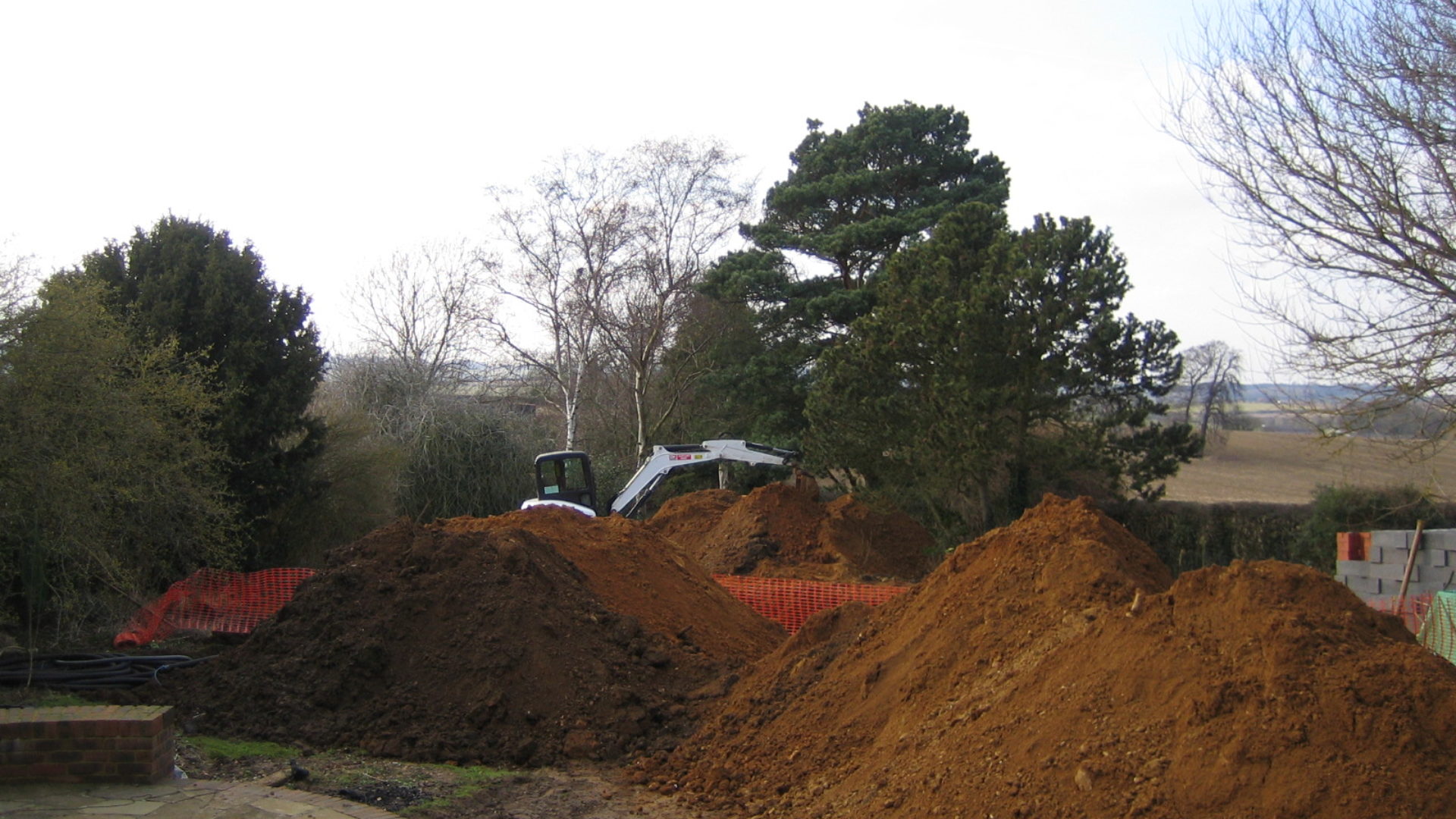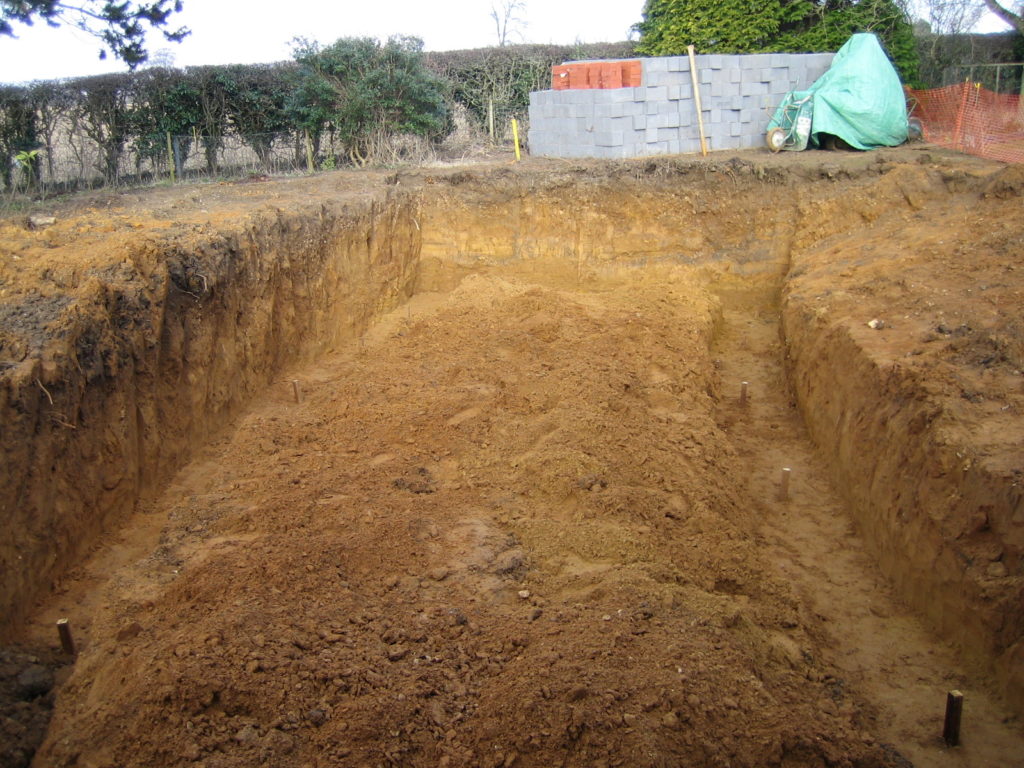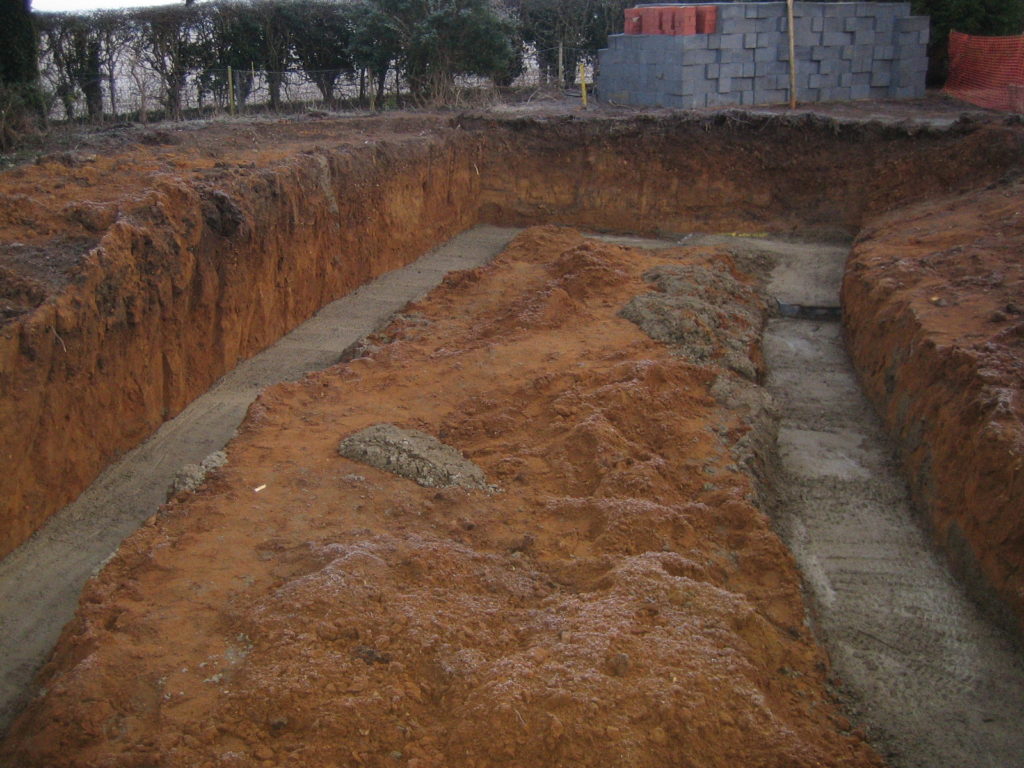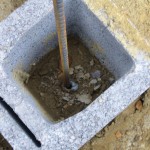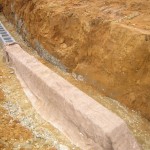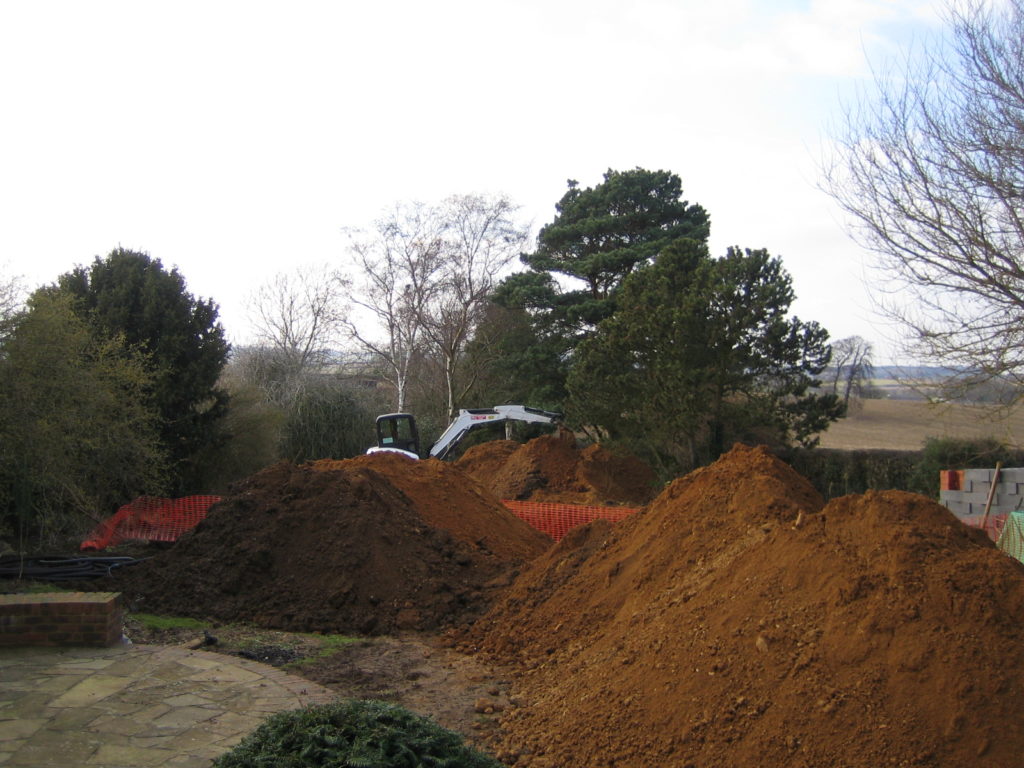After a number of requests from readers, I have relented and am keeping a blog of the construction of a swimming pond in our garden. From now on I am a client…
Getting out of the ground
This has been an interesting week. We started with a very big concrete pump. Although not the greenest solution, we had decided to use hollow concrete blocks for the main part of the retaining walls. I say the main part, because it is effectively only the central section of the inner concrete walls – the ones that support the deep swimming area. The outer edges of the retention (for the marginal areas) are provided by Oak sleepers, sunk vertically into the ground – more on these in a couple of weeks. The lowest section of the pool drops down between the concrete ring foundations for about another metre, effectively unsupported by the retaining walls.
For those of you who don’t know, concrete pumps normally come mounted on a lorry and are available in a variety of sizes right up to something that will pump tonnes of wet concrete up a seven storey building. We had ordered a fairly small pump with a long hose. Unfortunately what turned up was a large pump with a short hose. The pump was too big to get into our driveway, so with a combination of the pump lorry and the concrete lorry, we managed to completely block the street. The hose j-u-s-t reached the end of the excavations, which meant that Glen, Glynn, Mark and Ben had to shovel all the wet concrete by hand around the foundations. Setting out the foundations for the curved walls of the pool proved a little challenging amidst the mud, but it looks great.
I am sure there was some under-breath cursing of designers and their crazy ideas. Straight would have been so much easier…
The next step was drilling holes in the concrete and epoxy fixing in the re-inforcing rods. With this done, the laborious effort of carrying the blocks down and laying them over the rods began. Even with the cold weather we have been able to continue laying blocks. We have a boiler to heat the water if we need to, but so far we have not had to resort to this. The ‘hole’ seems to have afforded a sort of microclimate and the
blocks were not cold to the touch this morning. Finishing block-laying fairly early in the day and covering the new work with hessian to insulate it helps a lot, and we have had no failures so far.
Of course, all this has carried on with our garden still looking something like the spoil heaps around a mining town. Our neighbours came back from a three week holiday and couldn’t quite believe their eyes. The dogs have found it very – interesting. The garden had clearly become quite boring after six years, with only the odd rabbit to offer diversion. Suddenly, it is a whole new world. They have reacted differently to this. For one it is traumatic – she goes and uses the very small patch of grass remaining before scuttling back inside to familiarity. For the other, it seems to be a constant source of amazement and excitement – she can’t wait to get outside each day when the guys arrive.
On Thursday Glen went on a construction course on swimming ponds, perhaps a week or two later than we would have liked, but still timely. It allowed us to fine tune quite a few details of the design, but also made us realise we seem to have got most things about right.
Meanwhile, Vicky and I have been trying to sort out some of the planting. The lower part of the garden is going to be a forest garden with layers of different plants producing different crops. We are just putting the finishing touches to this (after a lot of ‘discussion’) and there will be a lot more detail in next week’s blog, along with some of the outlines of pernaculture principles behind the design.

